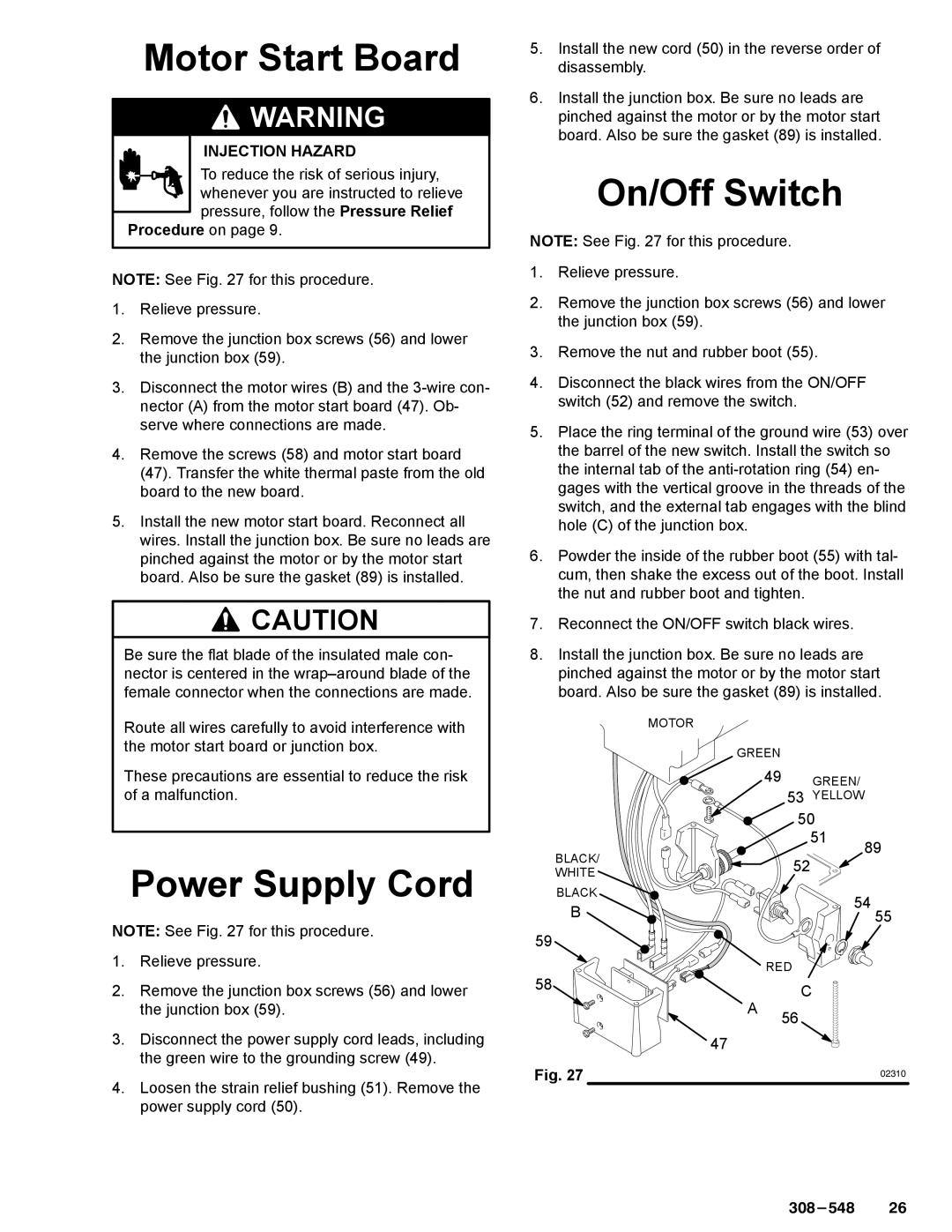390sts, 231-353, 308-548 specifications
Graco Inc. has established itself as a leader in fluid handling equipment, and the Graco 308-548, 231-353, and 390STS models exemplify this commitment to innovation, efficiency, and reliability. These models are designed for high-performance applications in various industries, including automotive, construction, and manufacturing.The Graco 308-548 is engineered with a powerful motor and advanced pump technology, providing user-friendly operation and outstanding reliability. Its design allows for easy maintenance, minimizing downtime and increasing productivity. The adjustable pressure setting ensures optimal performance for different materials, making it a versatile choice for spray applications. Its lightweight construction and portability enhance usability, allowing operators to move the unit with ease.
On the other hand, the Graco 231-353 model is known for its advanced airless technology, which enables users to achieve a smooth and even finish without the need for thinning. This model is equipped with an efficient pump that delivers consistent material flow, ensuring high-quality results in every application. A notable feature of the 231-353 is its ability to handle a wide range of coatings, including paints, stains, and sealers, making it ideal for both interior and exterior projects.
The Graco 390STS stands out in this lineup with its robust design and powerful performance, suitable for larger scale projects. It incorporates SmartControl technology, which provides precise pressure control and consistent spray patterns, contributing to an efficient work process. The ergonomic design emphasizes operator comfort, reducing fatigue during extended use. Additionally, the 390STS supports a variety of spray tips, allowing for customization based on specific job requirements, further enhancing its versatility.
All three Graco models feature durable construction, capable of withstanding rigorous job site demands. They are built with high-quality materials that resist corrosion and wear, ensuring longevity and reducing the total cost of ownership. The ease of use and intuitive controls minimize the learning curve for new users, making these models accessible to both professionals and DIY enthusiasts alike.
In conclusion, Graco Inc. continues to push the boundaries of fluid handling technology with the 308-548, 231-353, and 390STS models. Their powerful performance, advanced features, and user-friendly designs make them standout choices for anyone in need of reliable spray equipment.

